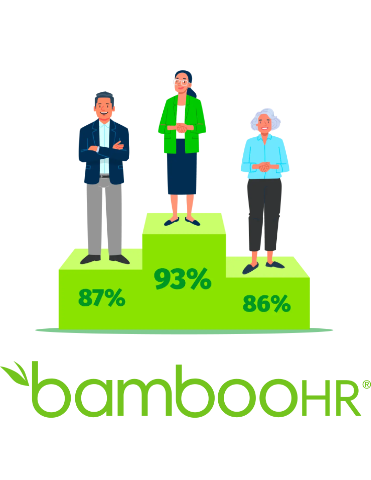Keeping Gen Z happy at work

Give Gen Z up-to-date workplace tech or they’ll quit, advises Attar Naderi at Laserfiche
2024 marks significant anniversaries for two of the most impactful, influential releases in modern technological history. It’s now 40 years since the release of the original Apple Macintosh in January 1984, which would revolutionise the personal computer market. Then, two decades later, Mark Zuckerberg launched ‘TheFacebook’ in February 2004— transforming the internet forever.
These two similarly commemorated innovations coincidentally represent both types of essential computing products: hardware, in the Mac, and software, in Facebook. They also mark the beginnings digital technology’s entry into our everyday lives. The Mac was the first successful mass-market mouse-driven computer with a graphical user interface, while Facebook became the first social media platform to surpass one billion users back in 2012.
The days of computers, websites, and apps being only for “nerds” is long over: technology is now for everyone.
Ever since the Mac’s release, the advancement of personal tech has shown no signs of slowing. Now, many of us use 4K TVs, Bluetooth headphones, AI assistants and more at home each day. And they often work together so seamlessly that we can forget just how fiddly devices used to be.
However, when we enter the workplace, it’s often a different story. From outdated security software to decade-old printers, working days can be stalled by inadequate tech. So, how severely can legacy technology hamper a business’s productivity?
The drawbacks of old technology
The headline risks of persevering with old tech in a business environment are apparent. Dated hardware and software tend to regularly crash, resulting in downtime, stress, and frustration. The costs of hiring IT professionals or reaching out to external to constantly repair issues can quickly mount.
Meanwhile, cybercriminals can more easily take advantage of security gaps in legacy technology and breach sensitive customer data and financial accounts. Similarly, the use of old tech makes it harder to properly comply with the latest safety and security regulations in each industry. Compliance failures can lead to hefty fines and a permanently damaged reputation.
However, an oft-forgotten concern, which can be as equally disruptive, is the negative impact that all this outdated technology has on a business’s workforce. As discussed, the technology in people’s personal lives often works together seamlessly.
In particular, Gen Z has grown up entirely in the digital age and expects their employers to provide the same levels of advanced, intuitive technology as they enjoy at home. Today, workplace technology needs to aim for as good a user experience as introduced by Apple, Facebook, and more. Otherwise, businesses may begin to suffer an exodus of top talent.
The negative impact on employees
Woeful technology is now forcing dissatisfied employees to go as far as quitting their jobs. According to Laserfiche research, 70% of British Gen Z have left, or would consider leaving, their company due to outdated technology. The top frustrations for these younger employees are that technology is too slow (54%), too old (35%), or there is a lack of tools that help with time-consuming tasks (35%).
The research also confirmed that Gen Z has far better technology at home than their workplace. For instance, four-fifths (78%) have a laptop at home and half (53%) have an iPad or tablet—but at work, 57% use a stationary desktop computer, just 56% use a laptop, and less than a third (30%) use an iPad or tablet.
Meanwhile, nearly half (46%) of Gen Z has high speed or fibre optic internet at home, compared to just over a third (37%) at work. And though two-fifths (41%) of young people have a virtual assistant at home, just 1 in 10 (12%) can say the same for their workplace.
So, it’s no wonder, then, that two-thirds (66%) of Gen Z recognise that their own technology is better than what they use in the office. Over half (53%) agree that the technology used for work is outdated and in need of an upgrade. And if this upgrade doesn’t happen, the potential result can be, as mentioned, widespread resignation.
Giving staff the tools to succeed
Ever since the end of the pandemic, employees have realised that work isn’t simply about the highest salary. Today, they want better opportunities for career advancement, more valuable benefits, greater flexibility, and much more. These realisations helped to spark the post-COVID great resignation which, while it’s now eased, is still influencing how employees think about their jobs.
Ultimately, organisations must understand that the key to attracting and retaining talent is by improving the employee experience. Tech has a big part to play enabling staff to feel empowered, energised, and engaged in the workplace.
Investment into improvements here might seem costly, but managers must consider the intangible value they add to employee satisfaction and retention, as well the headline benefits of greater efficiency and productivity.
Today, it’s up to businesses to foster the right environment so that staff can flourish. When the workforce is happy and productive, it’s a win for employees and a win for employers. With 1984 and 2004 both proving to be significant years in modern tech, let’s hope we can add 2024 to that roster, too—the year of workplace technology transformation.
Attar Naderi is Associate Director EMEA at Laserfiche
Main image courtesy of iStockPhoto.com

Business Reporter Team
Related Articles
Most Viewed
Winston House, 3rd Floor, Units 306-309, 2-4 Dollis Park, London, N3 1HF
23-29 Hendon Lane, London, N3 1RT
020 8349 4363
© 2024, Lyonsdown Limited. Business Reporter® is a registered trademark of Lyonsdown Ltd. VAT registration number: 830519543





